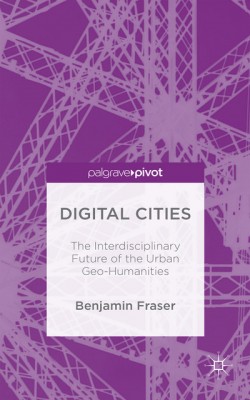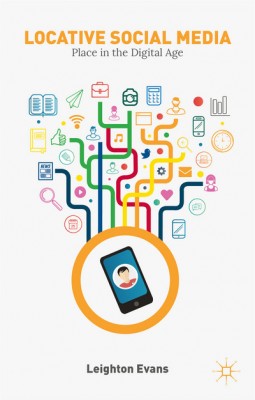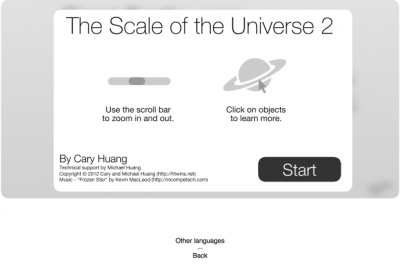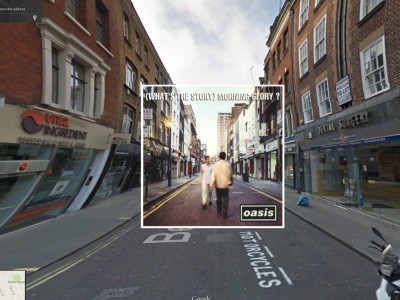Digital Cities: The Interdisciplinary Future of the Urban Geo-Humanities
Benjamin Fraser (Palgrave Pivot, 2015)
Digital Cities stakes claim to an interdisciplinary terrain where the humanities and social sciences combine with digital methods. Part I: Layers of the Interdisciplinary City converts a century of urban thinking into concise insights destined for digital application. Part II: Disciplinary/Digital Debates and the Urban Phenomenon delves into the bumpy history and uneven present landscape of interdisciplinary collaboration as they relate to digital urban projects. Part III: Toward a Theory of Digital Cities harnesses Henri Lefebvre’s capacious urban thinking and articulation of urban ‘levels’ to showcase where ‘deep maps’ and ‘thick mapping’ might take us. Benjamin Fraser argues that while disciplinary frictions still condition the potential of digital projects, the nature of the urban phenomenon pushes us toward an interdisciplinary and digital future where the primacy of cities is assured.
New Book: Digital Cities
Digital Spaces Posted on 14 Aug, 2015 15:43:26- Comments(0) https://ofspacesinbetween.liminoids.com/?p=97
- Share
New Book: Locative Social Media: Place in the Digital Age
Digital Spaces Posted on 14 Aug, 2015 15:38:51 Locative Social Media: Place in the Digital Age
Leighton Evans (Palgrave, 2015)
Locative Social Media offers a critical analysis of the effect of using locative social media on the perceptions and phenomenal experience of lived in spaces and places. It includes a comprehensive overview of the historical development of traditional mapping and global positioning technology to smartphone-based application services that incorporate social networking features as a series of modes of understanding place. Drawing on users accounts of the location-based social network Foursquare, a digital post-phenomenology of place is developed to explain how place is mediated in the digital age. This draws upon both the phenomenology of Martin Heidegger and post-phenomenology to encompass the materiality and computationality of the smartphone. The functioning and surfacing of place by the device and application, along with the orientation of the user, allows for a particular experiencing of place when using locative social media termed attunement, in contrast to an instrumentalist conception of place.
- Comments(0) https://ofspacesinbetween.liminoids.com/?p=96
- Share
Inside the Digital Humanities: Digital Mapping
Digital Spaces Posted on 14 Aug, 2015 15:29:58Introductory blog on digital mapping…
https://humdigi.wordpress.com/2015/05/02/inside-the-digital-humanities-digital-mapping/

As it was described in the last post, Digital Humanities is, in short terms, much more than computational processing data. It is about designing new ways of scholarship, with infinite potentialities and always open to new possibilities and new worlds.
From now on, lets talk about some ramifications inside the Digital Humanities. The topic of today will be Digital Mapping!…
- Comments(0) https://ofspacesinbetween.liminoids.com/?p=94
- Share
Classic album covers in Google Street View
Digital Spaces Posted on 30 Mar, 2015 16:59:28From Pink Floyd to PJ Harvey, our Street View specialist shows us the world’s cities through the lens of famous album covers…

The Guardian, 7 April 2014
- Comments(0) https://ofspacesinbetween.liminoids.com/?p=90
- Share
New book: A Spatial History of Web 2.0
Digital Spaces Posted on 03 Jun, 2014 12:11:35 ‘The Leisure Commons: A
Spatial History of Web 2.0’, by Payal Arora, has just been published by the Routledge
Science, Technology & Society Series
About the book: There is much excitement about Web 2.0 as an
unprecedented, novel, community-building space for experiencing,
producing, and consuming leisure, particularly through social network
sites. What is needed is a perspective that is invested in neither a
utopian or dystopian posture but sees historical continuity to this
cyberleisure geography. This book investigates the digital public sphere
by drawing parallels to another leisure space that shares its rhetoric
of being open, democratic, and free for all: the urban park. It makes
the case that the history and politics of public parks as an urban
commons provides fresh insight into contemporary debates on
corporatization, democratization and privatization of the digital
commons. This book takes the reader on a metaphorical journey through
multiple forms of public parks such as Protest Parks, Walled Gardens,
Corporate Parks, Fantasy Parks, and Global Parks, addressing issues such
as virtual activism, online privacy/surveillance, digital labor,
branding, and globalization of digital networks. Ranging from the 19th
century British factory garden to Tokyo Disneyland, this book offers
numerous spatial metaphors to bring to life aspects of new media spaces.
Readers looking for an interdisciplinary, historical and spatial
approach to staid Web 2.0 discourses will undoubtedly benefit from this
text.
- Comments(0) https://ofspacesinbetween.liminoids.com/?p=72
- Share

